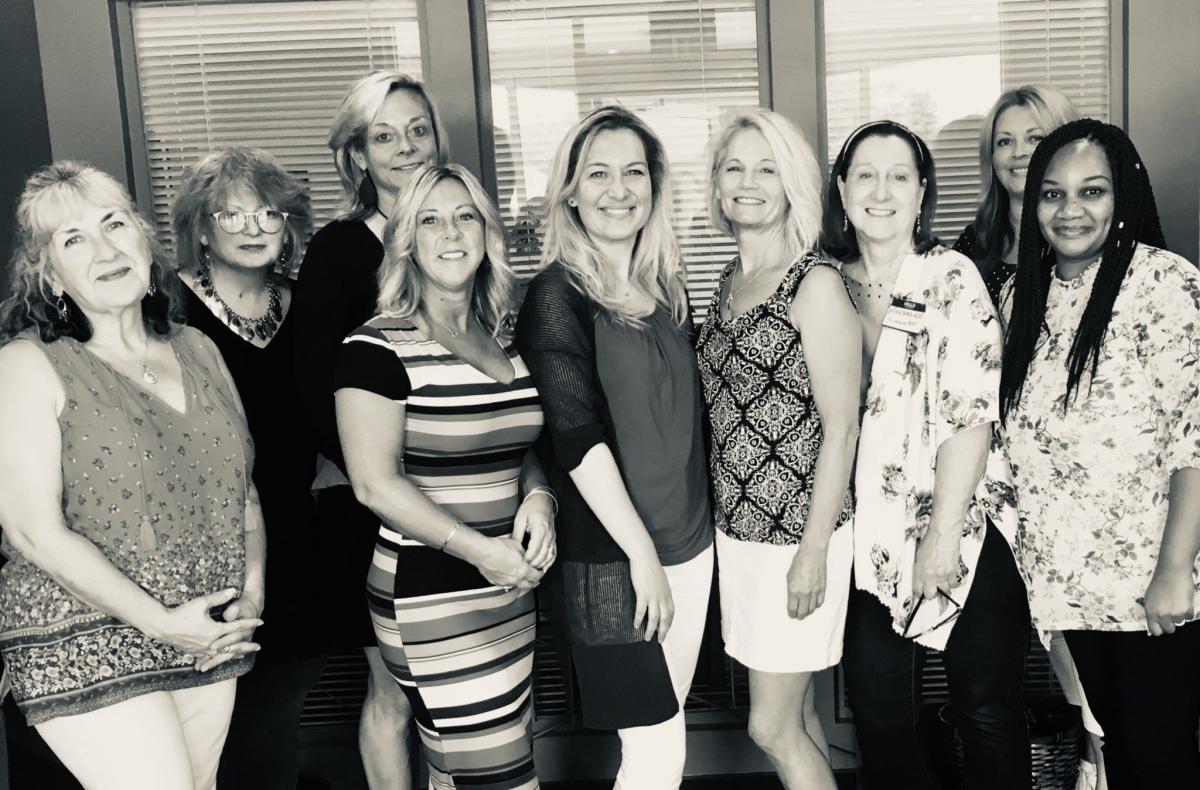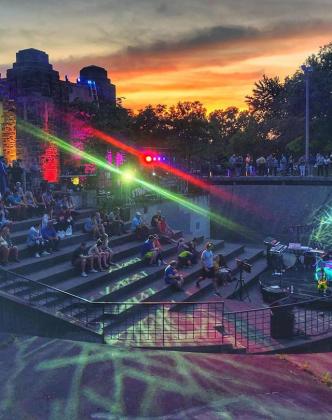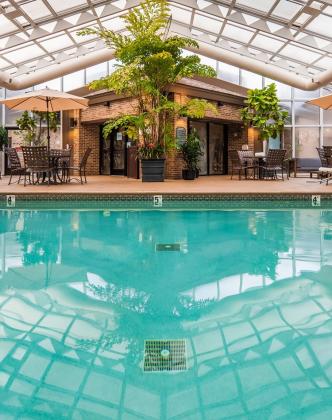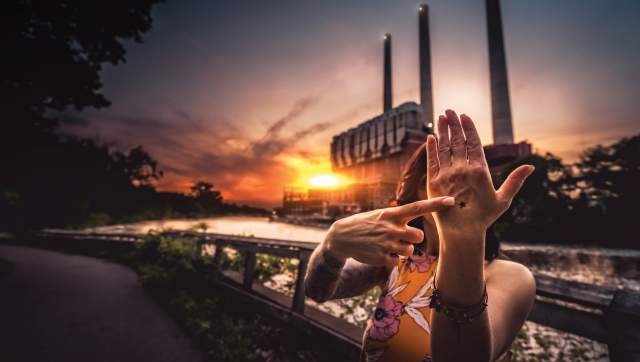Have you ever wondered how you can make the most of your meetings for everyone who attends? Courtney Trunk, Communications & Events Director of Arc Michigan, is here to help! In this Q&A, Courtney shares some tips on how to make your next meeting ADA-compliant.
Please briefly describe your experience as a planner or someone in this industry

The Arc Michigan Staff.
(from left to right) Cathy McRae, Jill Gerrie, Sherri Boyd, Anissa VanLiew, Courtney Trunk, Lisa Hertzer, Harvalee Saunto, Marie Eagle, Kanika Littleton
I should probably preface this by saying that I am not, by any stretch of the imagination, an expert in ADA compliance. However, I have been involved with the events at The Arc Michigan, (an advocacy organization for individuals with intellectual and developmental disabilities) for over 20 years and have learned a thing or two; Sometimes the hard way. My experience as an event planner in the disability field is likely similar to that of any other event planner.
The first rule is to make sure everyone has what they need to accomplish their goals for the event, including attendees, presenters, vendors, and venue. Oftentimes that means considering simple accommodations that end up making everyone’s attendance more comfortable, whether they have a disability or not.
What has been your experience with ensuring meetings are ADA-compliant? How has this evolved over the years?
When I started, the biggest concern was making sure to include large-print copies of registration forms and handout materials. While that is still a consideration, digitization put everything on a screen making it easier for an individual to enlarge their view to any desired size.
These days it is important and easy to include descriptive alt text on images (right click, “edit alt text”, enter description) and format text in a manner friendly to screen readers. (i.e. block style formatting in Word). PDF’s are frequently screen-reader compliant.
What are some of the things that an ADA-compliant event must have?
If the basis of good manners is consideration for another person’s comfort, then event planning is the embodiment of good manners. And when in doubt, ask.
Your event may not need every single accommodation that exists, so if you understand the needs of those in attendance, you can dedicate more thought and attention to those specifics. The Arc Michigan has an individual devoted to responding to requests for accommodation, so when those requests come in, I will answer directly to get a better idea of what is needed.
Some of the more obvious aspects to consider when event planning include cut curbs / ramps/ elevators and automatic doors. But other details can often be overlooked. Here are a few ideas:
- Communicate frequently. Dedicate a web page with event information and make that web page easy to find. Include maps/layouts/directions for both the surrounding area where the event is held, as well as the space where events will take place. Include agendas, registration, applicable tickets, restroom locations, and food information. These can alleviate the stress of visiting a potentially unfamiliar location.
- For an in-person event, choose a location with hard floors rather than carpeting to allow easier traction for wheelchairs and walkers.
- Check to make sure the location is near public transportation (i.e., bus or metro lines).
- Keep meeting/breakout rooms on the same level, and in the same building. This was one of those “learn the hard way” situations for me. The more movement, the more opportunities for accessibility challenges.
- When creating a room set-up, keep pathways and space between tables wide and clear to allow wheelchair access. This usually results in the use of a larger space than the typical room capacity layout would entail.
- Choose spaces with doorways that are 32 inches or wider.
- Include an allergy-sensitive menu. It’s no secret that food motivates attendance, so don’t leave anyone out.
- Provide an ASL (American Sign Language) interpreter or assistive listening devices. Venues frequently have a system in place to accommodate their own assistive listening device, you just have to ask.
- Support live captioning (both in-person and virtual).
- Include braille/ large print handouts and signage.
- Ask speakers/ presenters to use a microphone. Even if they don’t think they need one.
- Use plain language in written materials.
- Set aside a sensory-free space. Crowds can be overwhelming.
- Include frequent breaks in the agenda. No one likes to sit still for two hours.
- If the event spans multiple days, make sure your room block at the hotel offers options like roll-in showers, grab bars, lowered vanity/ bed, light-alarms, and allowance for service animals.
This list is not all-inclusive.
How can you assure that you are up on everything –what resources exist to help?
If your event is small enough or you know your audience well enough, you can flat-out ask your attendees if they require/ desire accommodation. That’s the best part of communication; people are generally happy to tell you what they need.
Other than that, below are some of the resources I have used in the past:
What are the keys to a successful ADA-compliant event?
- Communication
- Removal of barriers
- Frequent reminders
- Make sure everyone feels welcome
What are some of the biggest challenges and how have you helped address these?
Aside from the obvious pandemic-related challenges faced by the entire world, some of the more interesting aspects have been finding ways of reaching new people with diversity in communication.
Half of our members will only obtain information mailed to their house, and the other half won’t obtain it unless it’s on social media. There is constant input everywhere you look, it’s difficult to stand out. The continual evolution of technology combined with individual needs may make it seem difficult to keep up, but it boils down to being considerate to your fellow human.
Contact the Experts at GLCVB to Help Plan Your Next Event
The meeting professionals at the GLVCB are at your service and ready to help. They assist with custom requests because they are partners who are in-step and aligned with your group at every turn. Contact the Experts today!
Photograph Credit: The Arc Michigan











